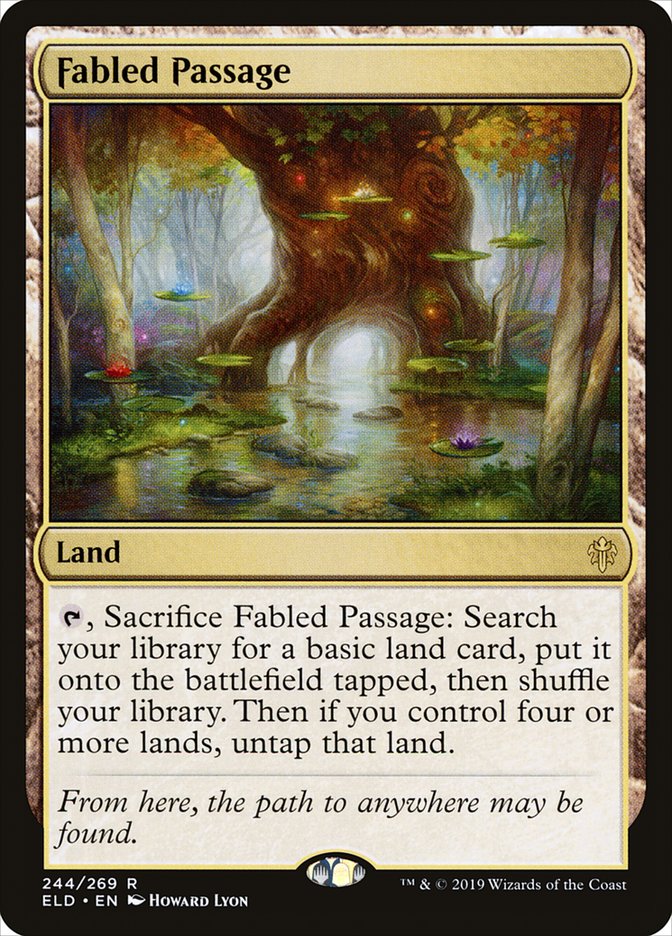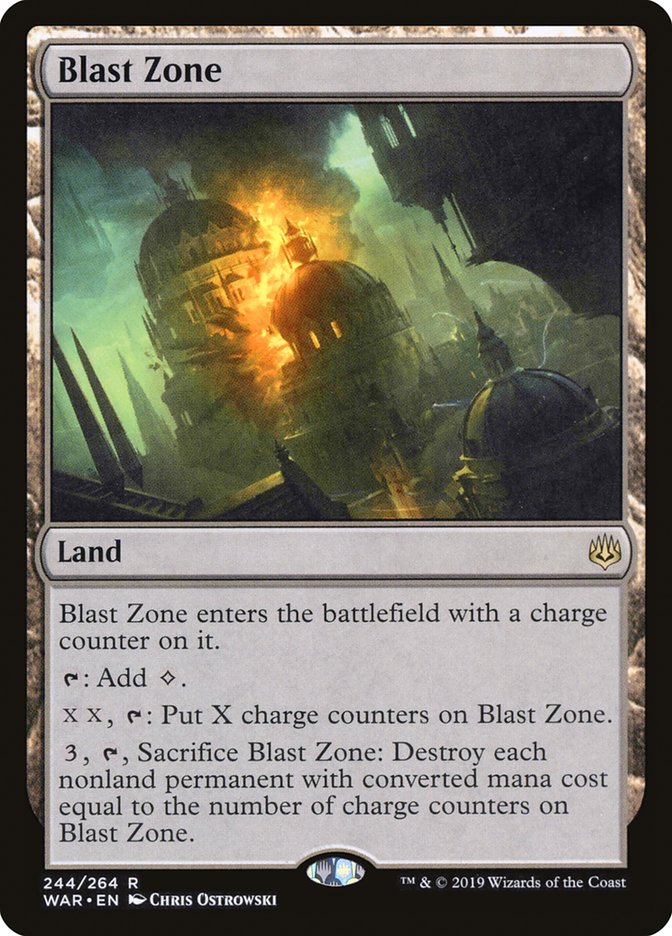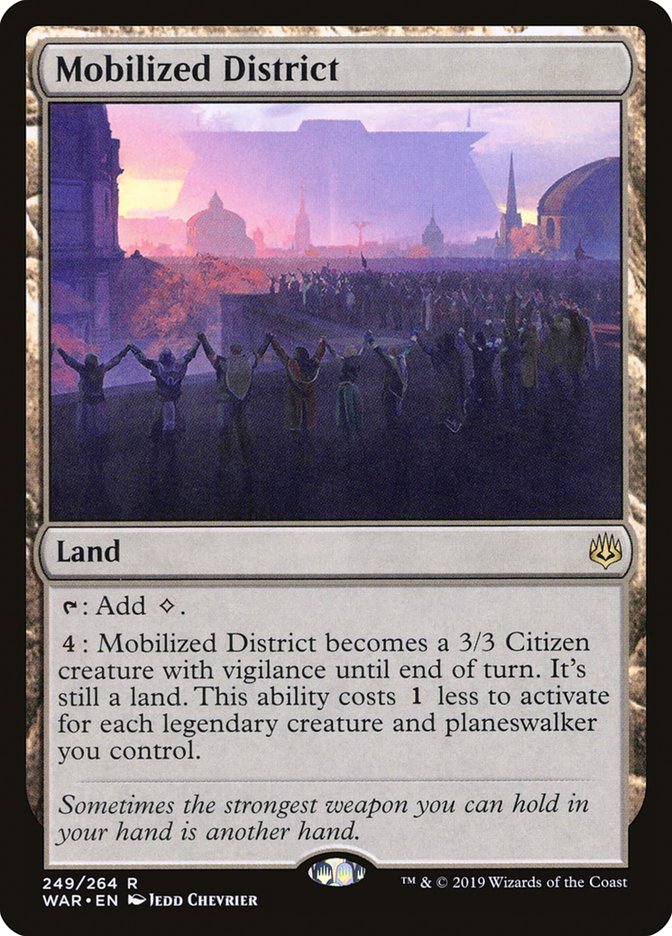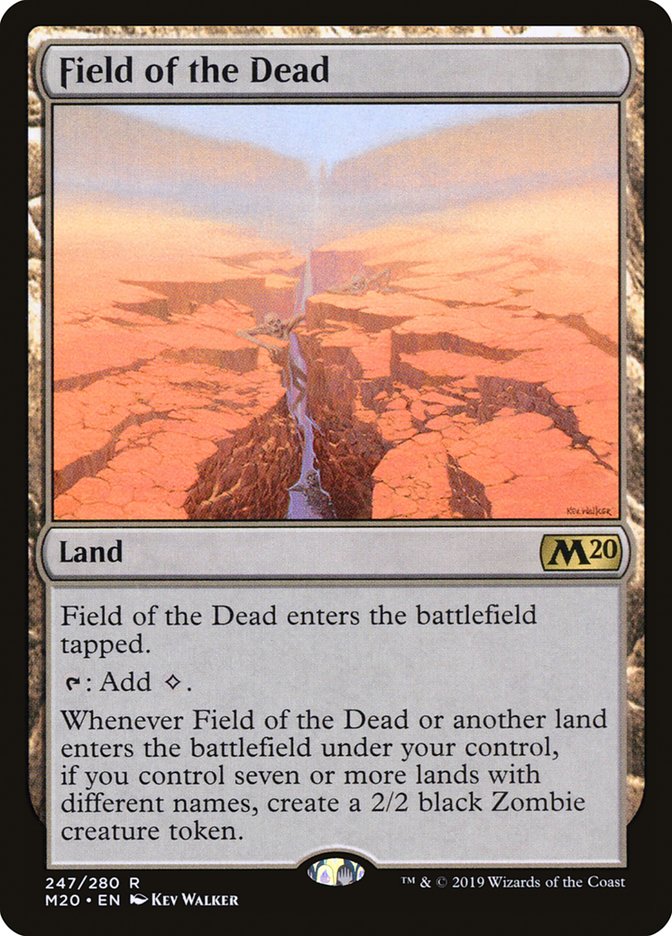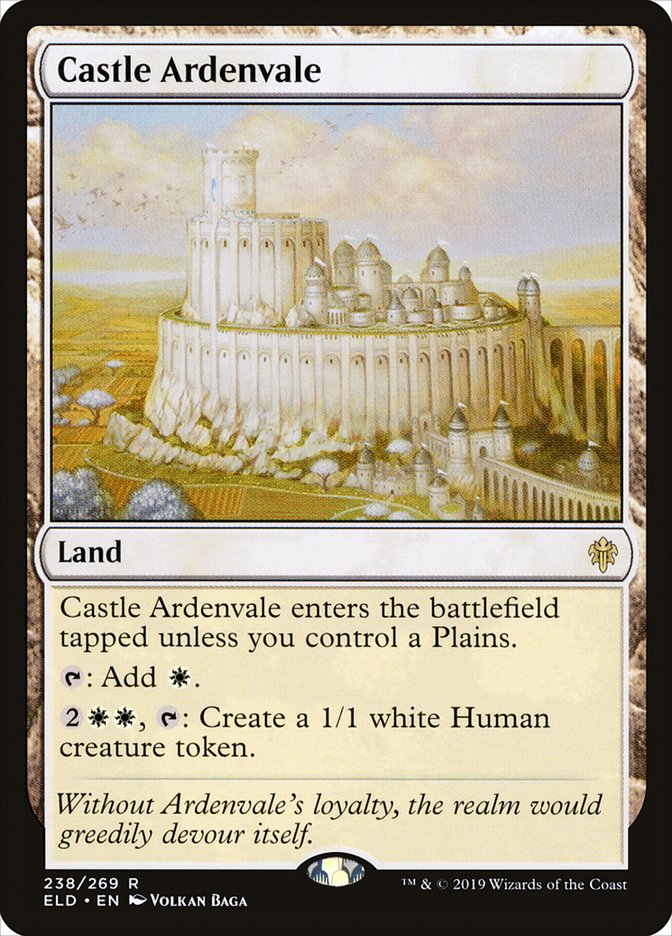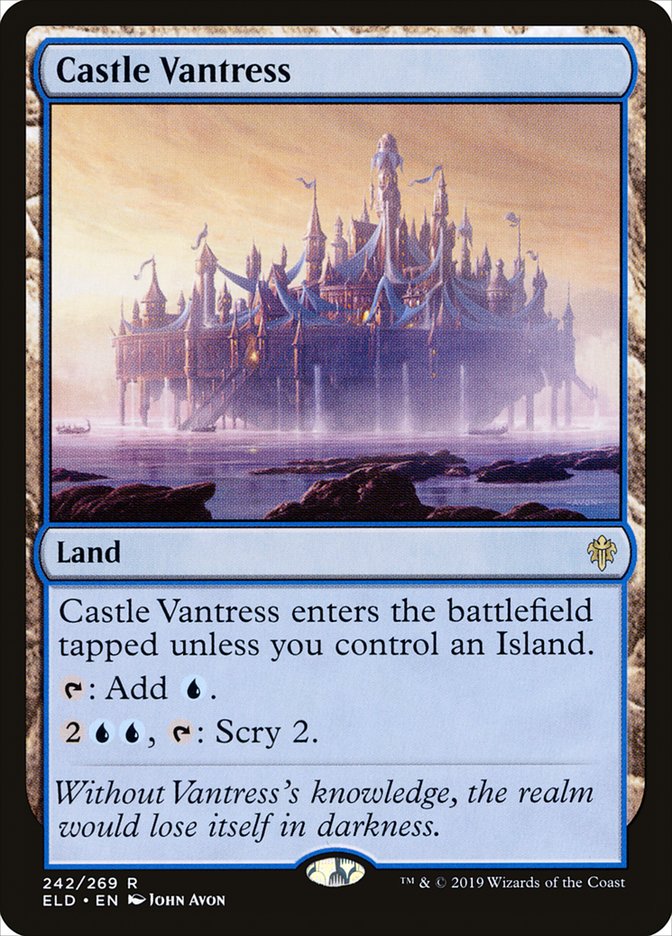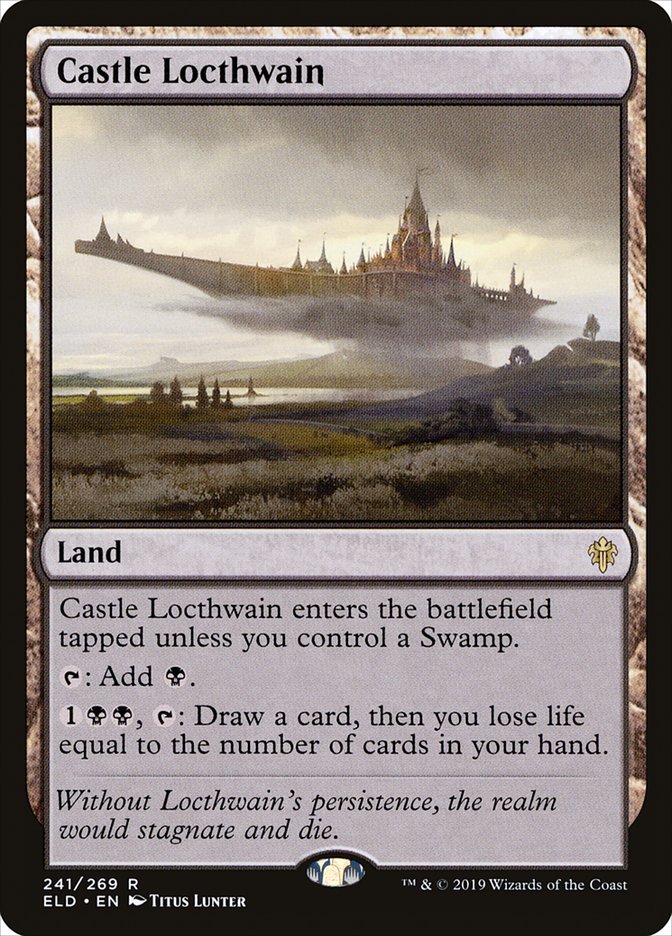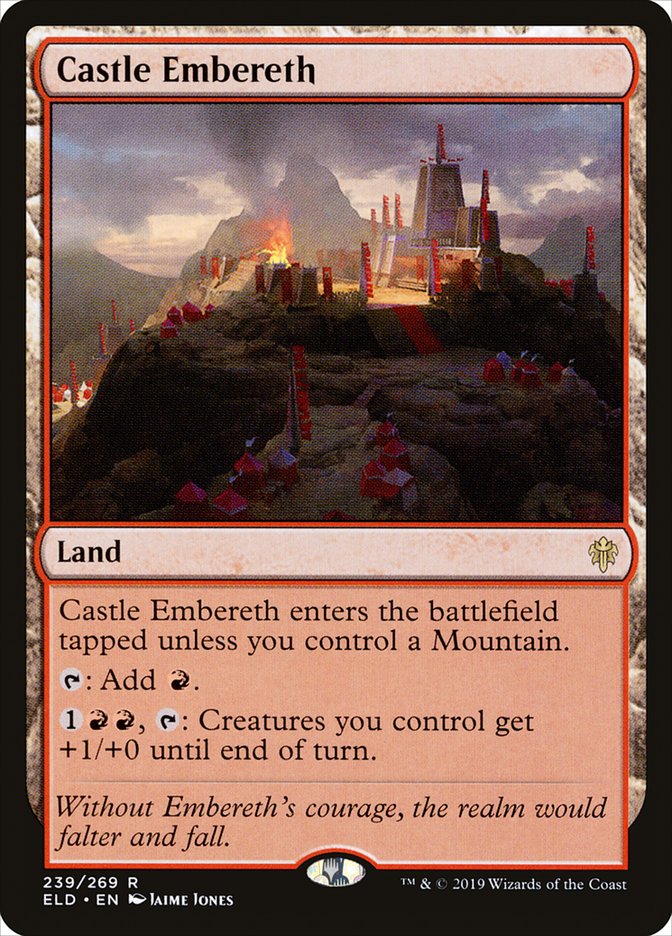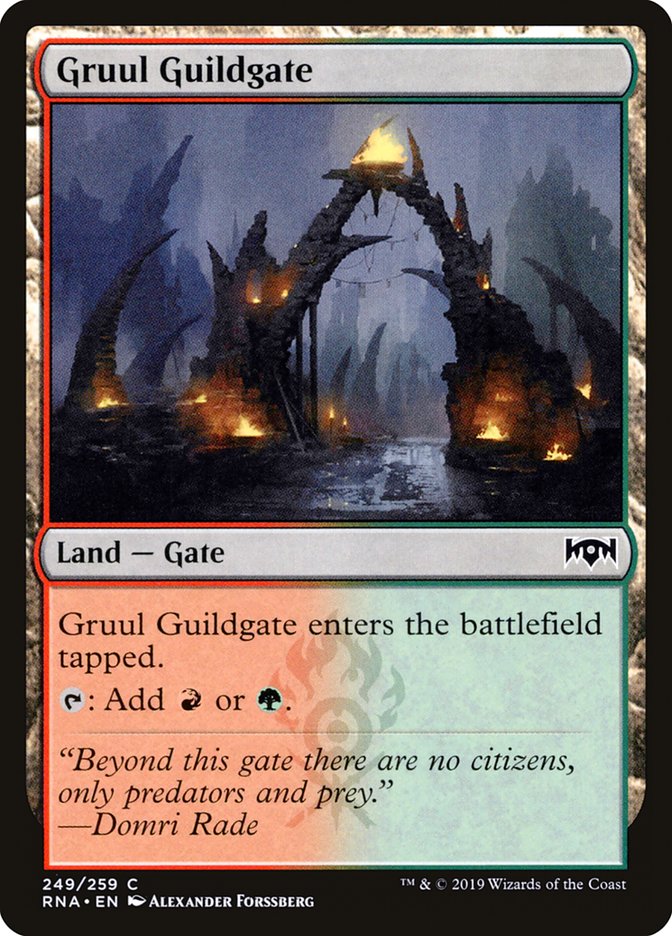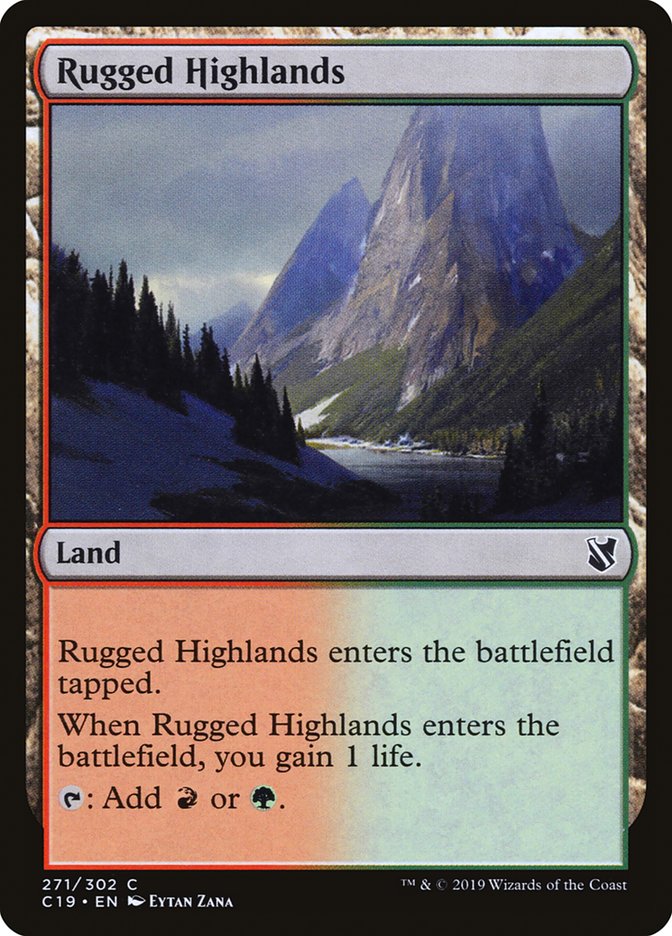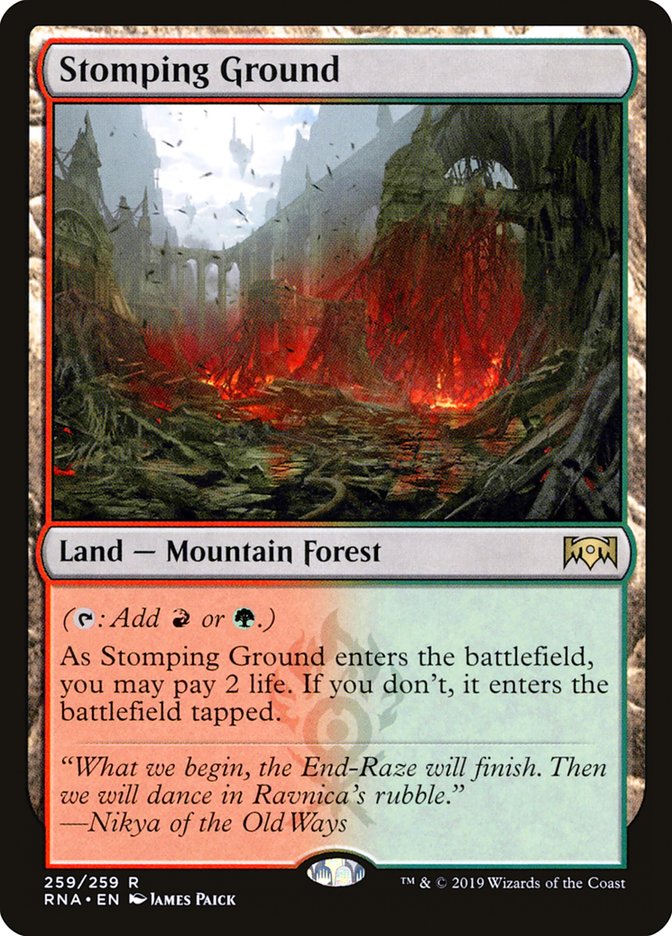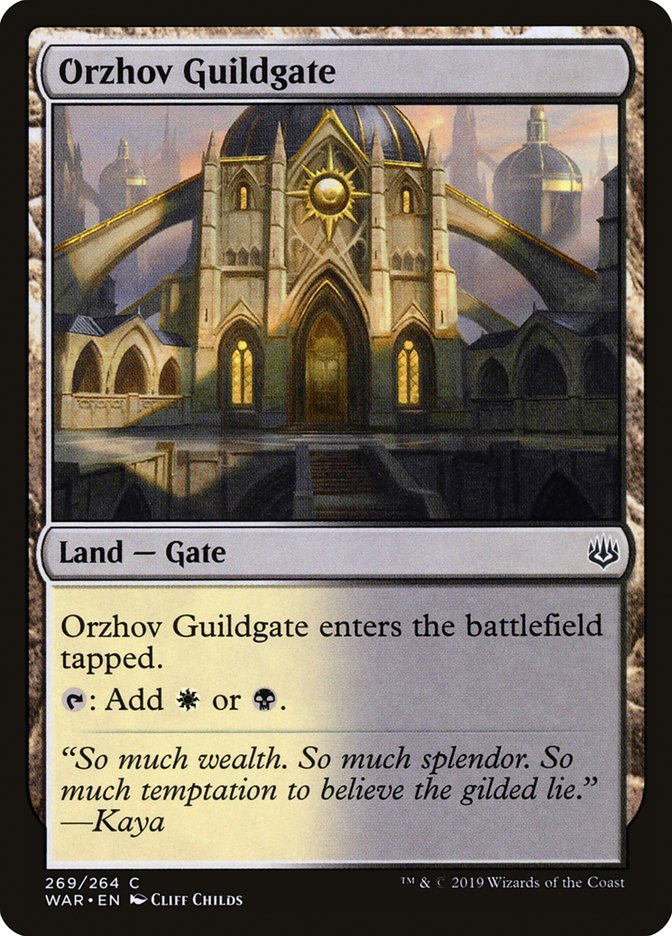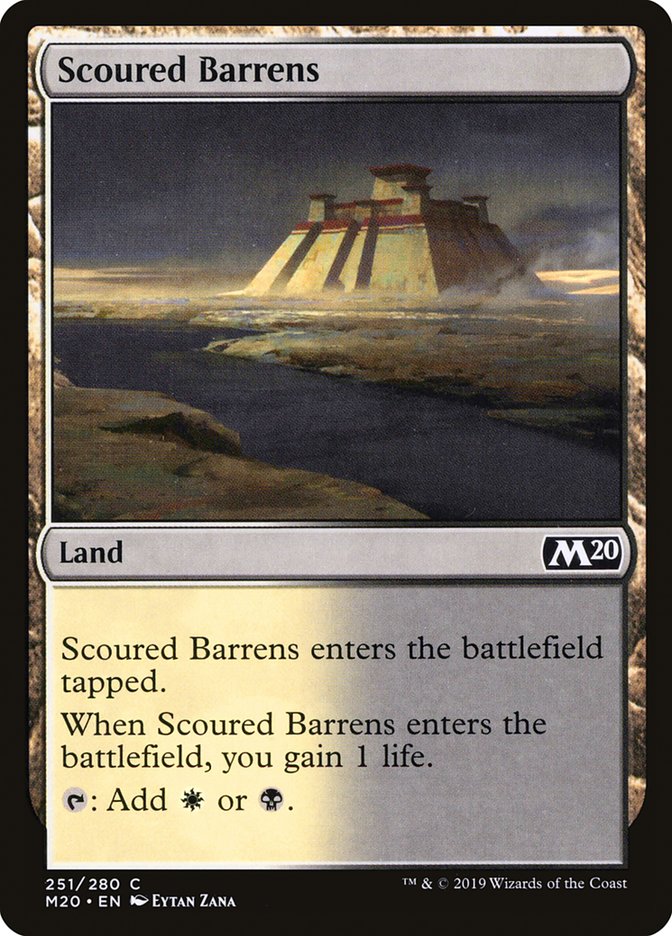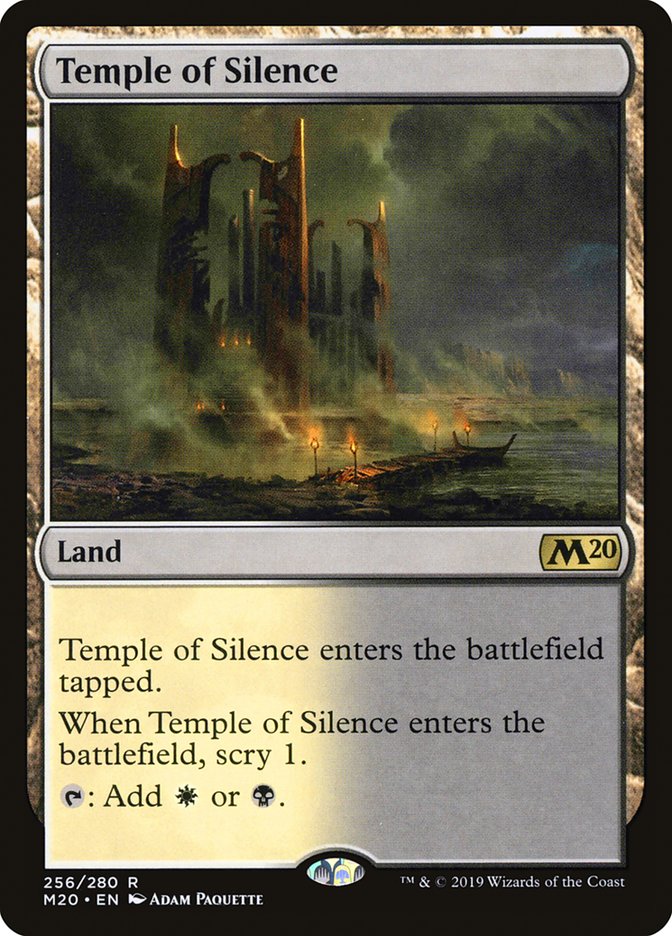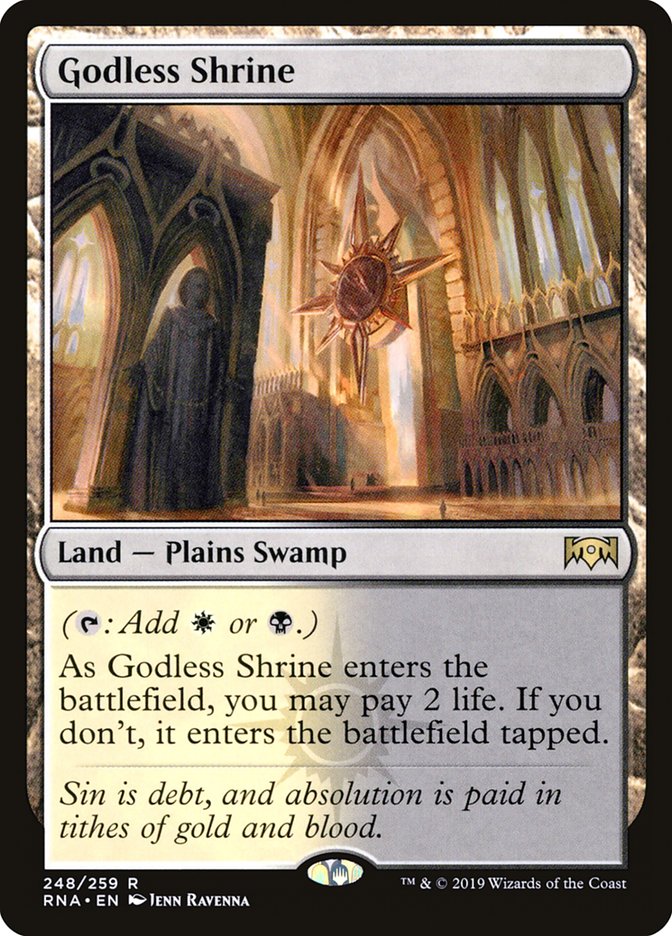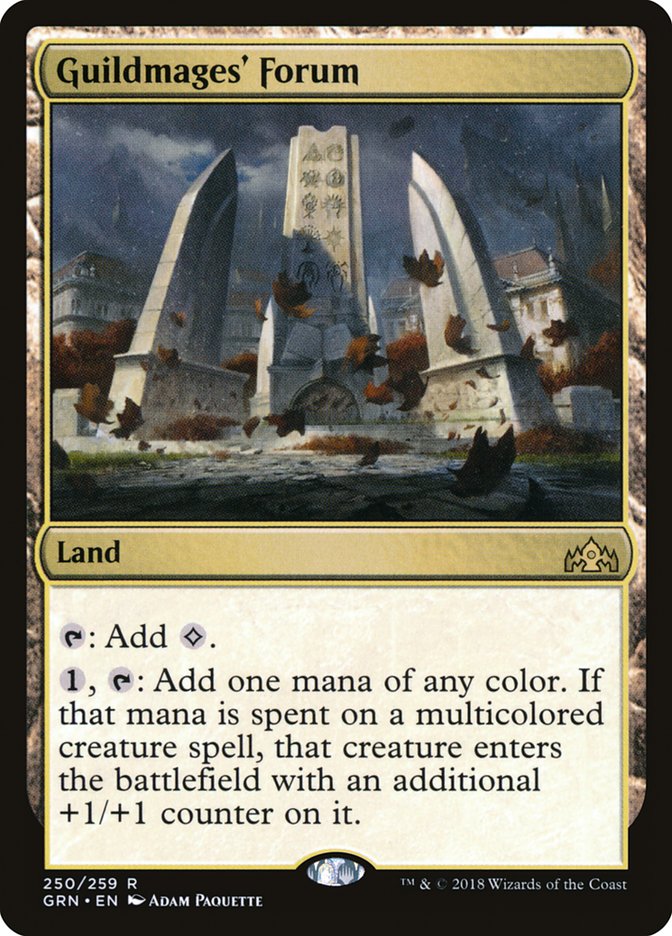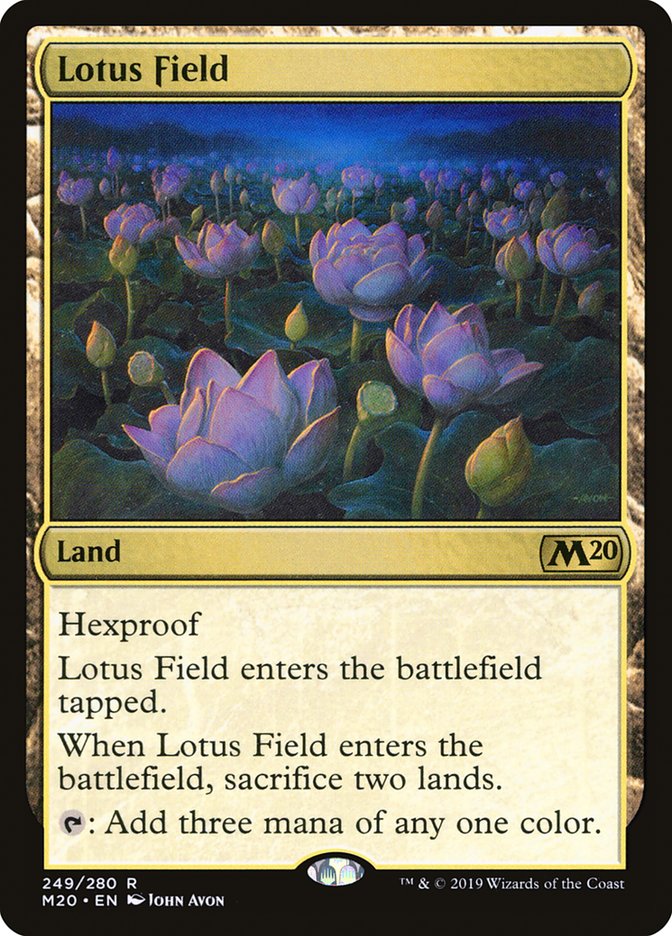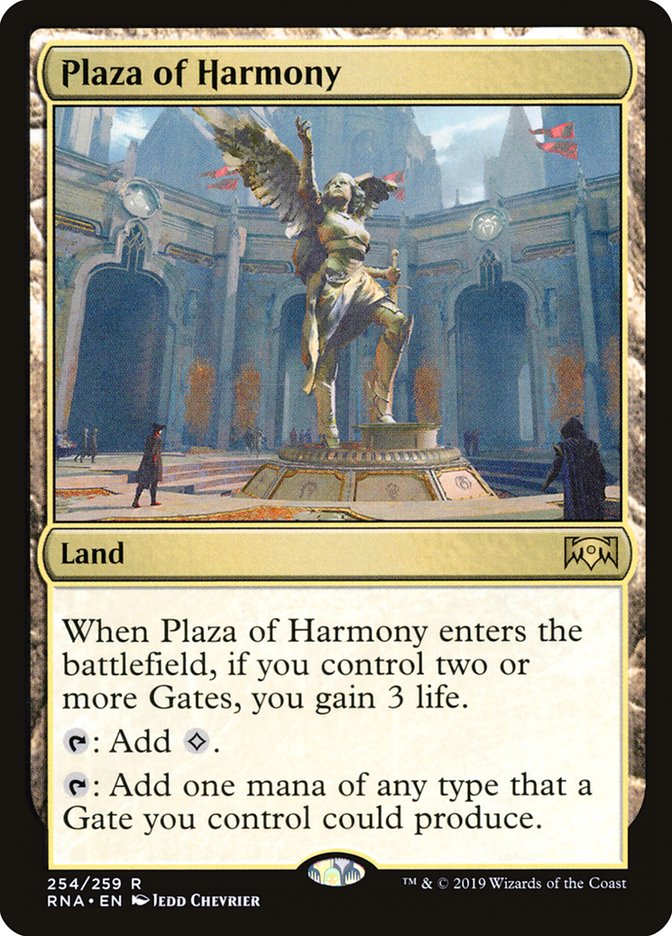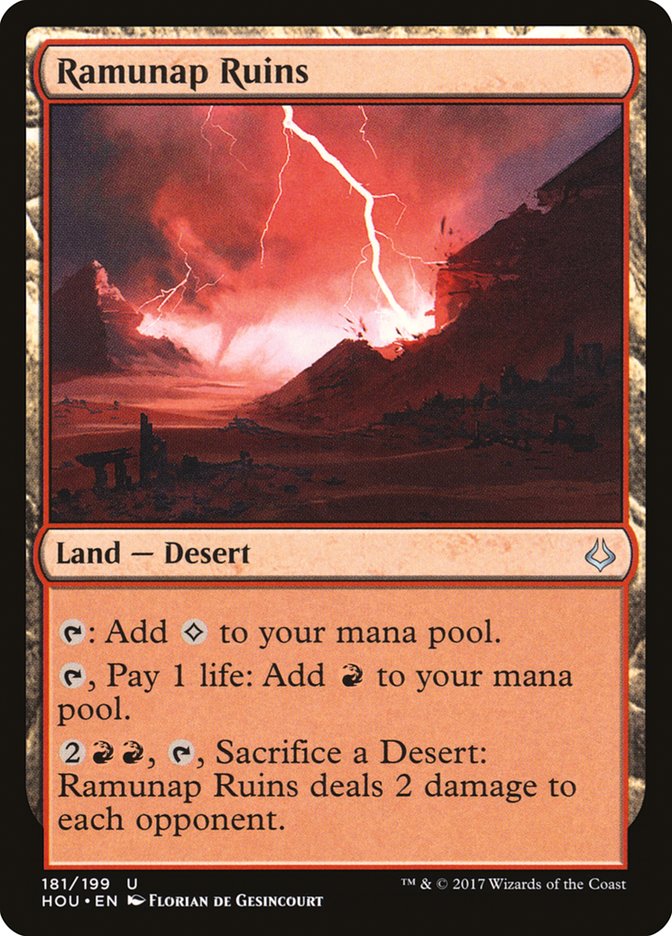Throne of Eldraine
comes out next week and with it a brand-new Standard format. Luckily Magic
Arena has recently started a new format called “Standard 2020” which
allowed us to play new Standard without Throne of Eldraine.
Obviously, that isn’t exactly what the format’s going to look like, but
everyone likes a little taste, right?
The one thing that was apparent was the shift in manabases. Four sets are
rotating and with them goes the ten buddy lands that have been vital in the
way we built decks for the past year. Now with the those gone, we have to
look at Throne of Eldraine for additional multi-colored mana
shenanigans. Sadly, Magic’s newest set failed to deliver, and my heart sank
when I heard there wouldn’t be any new dual lands in it.
I guess, in the end, Standard 2020 was a great place to test manabases.
That’s it, that’s all we get. At least for multicolored lands that can be
used in a variety of decks. Sure, Tournament Grounds will be good in tribal
Knight strategies, but the only fixing we’re getting from this set is a
rare Evolving Wilds. Crazy, right?
Now this isn’t the end of the world. After all, Fabled Passage will see a
decent amount of play. I’m just honestly a little saddened by this news, as
I’m always a fan of formats with exceptionally good mana. They just seem
more fun to me and it just often feels like Standard formats with bad mana
revolve around a small subset of Mythic Rares or a finite amount of
strategies that rarely get dethroned.
None of this ultimately matters though. I have no clue how fun Throne of Eldraine Standard will be before playing it. I’m just
expressing my initial feelings on the matter, but that doesn’t mean I
should stop working just because I’m not happy that we didn’t get to finish
off the Temples cycle or the introduction of a new cycle altogether. I want
better mana, but what I actually need is to get to work on figuring out how
this mana’s going to work.
So, let’s do that. Let’s get to work. Today I’m going to go over most of
the lands I deem Standard playable and discuss how I think things will play
out. Obviously take everything I say today with a grain of salt, but I do
believe this is valuable information for those of you that are starting to
brew things up.
Utility Lands
Blast Zone is best if the format is slower, and in a deck that needs to
destroy specific permanents. Just like Simic Nexus’ relationship with
Teferi, Time Raveler. I don’t expect this card to see much play.
Mobilized District didn’t see much play in Core Set 2020 Standard,
but I expect it to shine moving forward. This will be especially true in
mono-colored decks that play a high density of Planeswalkers. Since Throne of Eldraine give us access to a utility land for each
color, we should see more of these single-colored decks popping up.
I believe Field of the Dead will eventually see play, but it will not be as
good as popular opinion has been saying. It’s clearly good to play
alongside Golos, but playing tapped lands comes at a significant cost. My
guess is Field of the Dead decks will ebb and flow in playability with the
speed of the format. When it’s good, the format will speed up, and vice
versa.
We know first-hand how great Legion’s Landing was, and I expect Castle
Ardenvale to a great addition to a white-based aggressive deck if one is
good enough to compete. Who knows – maybe there’s a control deck that wants
it as well. It’s not high impact, but these effects don’t have to be.
I’d be shocked if Castle Vantress saw play. The issue is any other effect
would have been too good.
I really like the idea of Castle Locthwain in an aggressive deck that has a
removal-dense sideboard. Games 2 and 3 can go very long which makes this a
great way to stay in a game.
Red utility lands scare me and Castle Embreth is no different. The saving
grace for this card is that it’s only good if creatures are on the
battlefield. I assume Castle Embreth will be good, but happy it’s not
better than it is.
This is free mana acceleration for a mono-green deck. Now I have no idea if
that’s going to be good, but if it is, Castle Garenbrig will be great.
Ally-Colored Available Duals
Enemy-Colored Available Duals
Multi-Colored Lands
Once we take inventory of our options it’s clear that the enemy-cycle has
stronger mana given its access to the first five Temples printed in Core Set 2020. Half of the three-color combinations will have
access to one temple, and others two. That just comes down to what wedges
they’re in.
This mana isn’t amazing and especially so for three-color decks trying to
curve out. We’re seeing Golos, Tireless Pilgrim strategies pop up in
Standard 2020, and for now there’s no reason why they won’t continue to be
playable in Throne of Eldraine Standard starting next week, but
that’s the only place I’m currently comfortable playing 3+ colors right
now.
One combination that’s felt very good in Standard 2020 has been Boros, as
it’s got a lot of good cards as well as reasonable mana. Here’s a list I’m
playing in this week’s Fandom Legends Standard 2020 event that Seth
Manfield used to Top 8 Twitch Rivals this past Wednesday.
Creatures (25)
- 3 Aurelia, Exemplar of Justice
- 4 Swiftblade Vindicator
- 4 Tajic, Legion's Edge
- 4 Hero of Precinct One
- 2 Tenth District Legionnaire
- 4 Feather, the Redeemed
- 4 Skyknight Vanguard
Lands (24)
Spells (11)

Now don’t be taking too much away from this. Rakdos did finish first and
second in the Twitch Rivals event even though it only had access to a
single “good” dual land in the form of Blood Crypt; one version played
Cinder Barrens while the other opted to simply play more basics. Given the
small sample size of data (one tournament), it’s really difficult to know
if the mana will dictate what cards you can play.
This is, after all, the age-old issue with Magic. Adding colors to a deck
usually hurts consistency, but the gain is often worth it since the power
level of the card’s played increases. A balance is made in every format and
usually getting in games is needed to know.
One thing we don’t need games to understand is that utility lands,
especially those that create colors of mana, are really good. When Ramunap
Ruins was first previewed, the world couldn’t believe how bad it was, yet
the card was eventually banned in Standard. Throne of Eldraine
released five new colored-mana utility lands which I believe will
define how the format functions.
I know it’s strange to say that, but utility lands help define mono-colored
decks. Whether they animate into creatures or generate value elsewhere,
these lands help single-color strategies use their excess mana each turn
which builds up over time. The more colors you add usually means you’re
adding card advantage and thus becoming less linear. Single colored decks
don’t have that luxury of being able to draw cards, destroy creatures, and
eventually take over a game. Nope, they rely on whatever they can to get
the reach they’re looking for. Utility lands are often the best Plan B they
have and it’s usually a good one.
This cycle makes me believe that one or two mono-colored strategies will be
able to compete in this format. I don’t know what they will look like just
yet, but I imagine they’ll have a linear aggressive plan backed up by as
many utility lands as they can fit into their deck.
On the other side of the coin, I’ve lost a lot of my faith in three-colored
decks thanks to my extensive preparation in the 2020 Standard Arena format.
I wish Fabled Passage was the answer these decks were looking for, but I
highly doubt it will be all that great in a three-color deck.
Now it won’t be bad but adding basic lands of all three colors isn’t what
every deck wants. Think about Esper Control now needing to play an Island
along with those Kaya’s Wraths. Sure, it will be nice to have Fabled
Passage on Turn 4 to allow you to cast this spell, but that doesn’t help
when you draw the Island in your opening hand. It’s things like this that
don’t seem that big of a deal when initially building decks but come up
after extensive preparation.
Nope, I don’t think Fabled Passage is the glue that keeps every
three-colored deck together. They will have to be built around temples and
shocklands which isn’t a great combination against aggressive decks with
utility lands. Where Fabled Passage will most likely shine brightest is in
two-color decks, and specifically ally pairs as they don’t have access to
temples. These are the decks that worry about speed more than consistency
and also want to activate utility lands in the later turns. Fabled Passage
helps facilitate both things which is why I’d guess this card will be best
there.
Another thing that needs to be considered when evaluating Fabled Passage is
which two-colored decks would want it the most. Not every deck is going to
value this as highly as others as their specific mana requirements and
curves will all very. A good example here is Simic Flash. The deck needs
more blue mana than green to cast Sinister Sabotage by Turn 3, but then it
needs to turn around and find that second green right away for Frilled
Mystic or Nightpack Ambusher. This makes me believe that Simic Flash would
love Fabled Passage as the untap trigger for Turn 4 is exactly what this
deck needs. In fact, I’m confident enough to assume this deck would trim on
Temple of Mystery numbers if the deck had access to Fabled Passage right
now.
The biggest takeaway I have for today is that mana is the most important
aspect of Standard. It dictates way more than people give it credit for and
the best thing you can do for yourself as a deck builder is to put value in
that. Stress test your mana before you try to tune every card in your deck.
You want to find the limits of the mana first and foremost.


